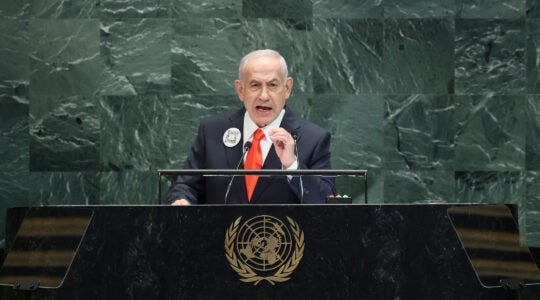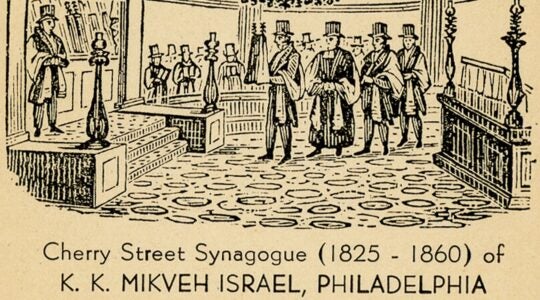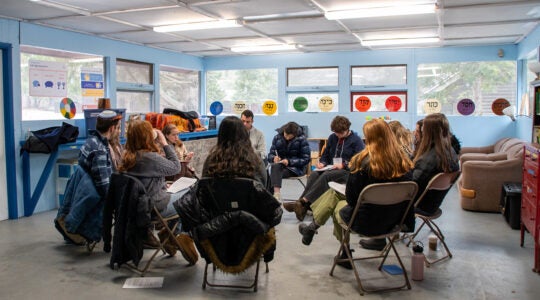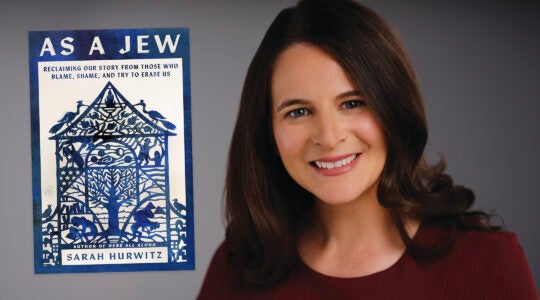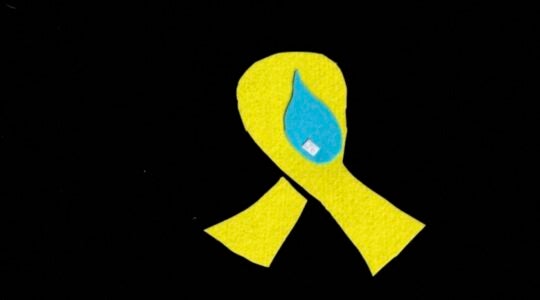When I arrived a few years ago at Villa Wannsee, the grand and picturesque lakeside manor just outside Berlin, I was fully aware of its role as the venue where Adolph Eichmann and other members of the Nazi elite mapped out their “Final Solution for the Jewish Question.”
Nonetheless, seeing the impersonal country-by-country lists of Jewish populations that were drafted for the gathering, together with photographs of the Nazis posing in the same drawing room where I stood, was bracing. Looking through the villa’s French windows toward the manicured gardens outside provided a trenchant perspective on the Nazi’s unique cultured bureaucracy of murder.
To be clear, I have traveled to Germany numerous times, enjoy close collegial relations with many of its scholars, and know that Germans have made greater efforts to come to terms with their anti-Jewish past than have most other European countries. I am also duly appreciative of the rich Jewish culture that existed in Germany both in medieval and modern times, and enjoy the opportunity to tour and learn through hands-on contact. That said, every visit to a German locale is a potential encounter with the novel and disturbing traces of the Holocaust. As an historian of 20th-century Jewry, I am keenly attuned to the multiple and complex ways that the tragic events of the Nazi era can appear at any corner. Yet sometimes the seamless continuum between this horrific past and seemingly mundane settings still takes me by surprise. Such was my experience this past October when I unexpectedly came upon a monument to Nazi industrialism in the murder of the Jews and the ethos that sustained it.
A few months previously, I received an invitation to participate in an academic conference on the history of Jewish ritual sponsored by the University of Erfurt, in Eastern Germany. Somewhat provocatively, I offered to present my research on rabbinic responses to cremation as an alternative to traditional burial rituals before and after the Holocaust – but by no means was I aware how resonant the topic would be for this place.
My first 25 hours in Germany were pleasant and interesting but relatively predictable; a typically comfortable and punctual 1.5 hour train ride from Berlin to Erfurt, a well-located and appropriate academic conference site, reunions with longtime colleagues and introductions to new ones, with lots of high-level intellectual discussion.
In the evening, I took a walk with some fellow Israeli scholars through the quaint center of town to the imposing gothic cathedral. Along the way I learned that the remnants of a medieval synagogue and mikvah were still accessible and that there are uncontestable records that the members of Erfurt’s Jewish community were massacred by their neighbors in 1349, as part of the persecution that accompanied the “Black Death Plague.” I was saddened by this, but unfortunately it was just another example of a pathetic but familiar trope.
On the second morning, I was scheduled to deliver my talk and then hear a few additional presentations before catching a train to Berlin for my night-flight home. As soon as my session ended, however, a woman introduced herself and asked if I had been to the Topf plant in town. When I looked puzzled by the question, she responded rather matter-of-factly, “you know, the local factory that built the crematoria ovens for Auschwitz, Belzec, Buchenwald, Dachau, and Mathausen, and many of the other Nazi concentration and death camps.” At that moment, I knew I had to see this place, in part because my late father-in-law had been incarcerated at Mathausen.
My visit to Wannsee brought home to me the absurdity of assuming any predetermined correlation between high culture, intellectual prowess, and moral fortitude.
J.A. Topf and Sons was founded in Erfurt in 1878, and specialized initially in building custom incinerators. With the dramatic growth in popularity of cremation as an alternative to traditional burial in the early twentieth century, the company entered this market and soon became one of the leading producers of crematoria throughout Germany. Some of the municipal furnaces were used as early as 1938 for the bodies of German Jews who were arrested during Kristallnacht (“Night of the Broken Glass,” November 9-10) and died in concentration camps. Yet it was after the Wannsee Conference in 1942, when the Nazis sought to develop an industrialized system for the mass murder of the Jews and disposal of the corpses, that the Topf expertise took on its critical role.
The “crowning achievement” were the ovens they manufactured to the specifications of the Nazis that stood in each of the four Auschwitz-Birkenau “death-factory” edifices – ready to incinerate the corpses of those murdered in the adjacent gas chambers. These crematoria were built to work continuously – maximizing volume and speed while economizing on fuel. In one internal company memo, the chief engineer Kurt Prüfer, wrote in September 1942 that they had succeeded in developing a product that could cremate 2,650 bodies per day (80,000 per month), but Nazi officials were concerned that this would not meet their expected capacity.
The company was clearly proud of its merchandise and affixed its insignia to all the furnaces that were placed in the camps. Not only did the engineers from Erfurt plan these instruments of destruction and did their workforce produce them, the company’s responsibilities included: on-site installation, regular maintenance, and dealing with any major malfunctions. As such, Topf staff made frequent visits to the death camps, and not just the upper management, but many more of its employees, were fully aware of the uses of their products.
The administration building, which continued to function after the war until 1994, but was subsequently in disrepair, was recently restored to its World War II form and transformed into an educational space. During my visit, I walked through the rooms where the engineers addressed the many technical challenges that their task presented. I also saw the original blueprints for the ovens as well as numerous correspondences between the S.S. officers at Auschwitz and other camps and the Topf staff. From the top floor of the edifice there is a clear view of the Buchenwald crematoria chimney just a few kilometers away.
The financial incentives to dedicate so much energy to this project were relatively minimal, and the company was not forced to participate in this aspect of the war effort. Apparently, the combination of belief that this was the will of the State, along with the professional challenge of testing the possibilities of a new applied technology, was sufficient motivation for the company to justify dedicating itself to the annihilation of the Jews, or at least ignoring the consequences of its actions.
My visit to Wannsee brought home to me the absurdity of assuming any predetermined correlation between high culture, intellectual prowess, and moral fortitude. At the Topf Factory in Erfurt, moreover, I was jarred by the degree to which the Nazi “industry of murder” was predicated on a visceral dedication to ingenuity and technological advancement. At best, this enthusiasm blinded the run-of-the-mill engineers and factory workers to the heinous purpose of their efforts. At its most insidious, the ideology of racial hatred that inspired the Wannsee elites joined together with a millennial tradition of grassroots loathing of local Jews to produce the inferno that was called Auschwitz.
Adam S. Ferziger holds the Samson Raphael Hirsch Chair for Research of the Torah with Derekh Erez Movement in the Department of Jewish History and Contemporary Jewry at Bar-Ilan University, Ramat-Gan, Israel.
The New York Jewish Week brings you the stories behind the headlines, keeping you connected to Jewish life in New York. Help sustain the reporting you trust by donating today.
